Thingiverse
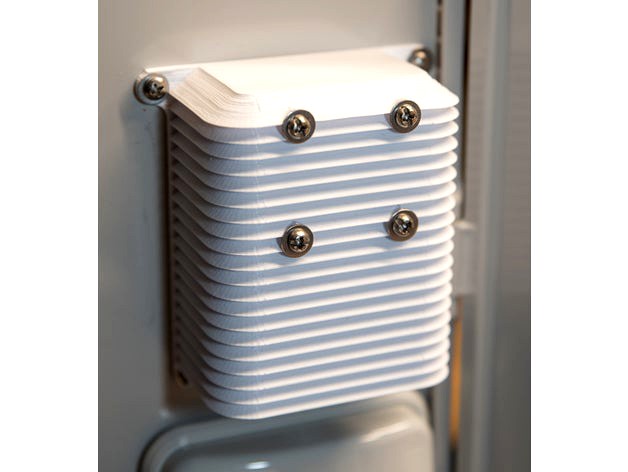
Weather/Air Sensor Pagoda / Housing / Stevenson Screen by ValarmLLC
by Thingiverse
Last crawled date: 3 years ago
This is a couple of useful screens for installing weather sensors, especially temperature/humidity/barometer, in outdoor or totally remote systems. Screens like this are known as a Stevenson Screen, or a "Meteo Pagoda", in our own parlance at Valarm. The screen is obviously designed to allow the ambient atmosphere to contact the sensors, without exposing the sensors directly to rain or snow.
Two versions are presented here: a simple "passive" version and another with provision to add a 40mm fan or 40mm blower to force ambient air to circulate past the sensor. Adding a fan to such a system creates a significant extra power drain, a concern since many such systems are solar or battery powered. But forced airflow definitely creates a more accurate recording of ambient temperatures, especially in sunny environments. Note though you should still always attempt to keep such sensors/systems well shaded, and/or at least work to install the sensor on the North side of the installation, if you are in the northern hemisphere, and vice-versa for the the southern hemisphere. Unless of course you are trying to record the temperature "in the sun" - though this is not the normal meteorological practice, nor the public expectation. (That's what the UV or Heat Index is for). You can use the "fan-forced" version without a fan, of course. It just takes quite a bit longer to print and uses more material.
The fan required is a 40mm fan (attaches to the front of the screen) or a 40mm blower (attaches against the back wall). We use #6 stainless hardware (machine screws/washers/nuts) for the front fan, or the self-tapping screws that ship with most fans/blowers to attach a blower to the rear wall.
O-ring: In case you will be placing your sensor INSIDE a larger enclosure, to which this screen is mounted, a provision for a rubber o-ring makes it easy to seal this against the main box to reduce the amount of water that might seep into the main enclosure. A printable cutting template makes it easy to cut the screw holes for mounting the screen, and for cutting the slot to expose the sensor to the elements. The O-ring is a Sur-Seal ORBN019x250, buna nitrile rubber, 70 durometer, 13/16" ID, 15/16" OD. Also available in smaller packages.
For remote monitoring installations we build at Valarm, we have printed this in PLA for a few years, and they really do last a very long time out in the elements. Yes, PLA does lose color under UV exposure, but we're typically starting with white anyway, and always trying to keep the part in the shade. Yes, PLA does eventually become more brittle under UV, cold/heat and general exposure. But this part is not expected to be strong or particularly load bearing. If you want extended life from this part, there are certainly better materials (ABS is NOT one of them). Or you can simply give it a nice coating of a UV-filtering poly/urethane clearcoat from a spraycan. Note that these are never completely "clear" and your part will be visibly yellowed by the coating.
This design is part of a "commercial" system that is available for purchase as a complete kit on our website, where you can also purchase the specific "Meteo" sensor around which this design was built. But we encourage you to print it yourself, use other sensors, or whatever else you might come up with, and we would of course love to hear about the results!
Two versions are presented here: a simple "passive" version and another with provision to add a 40mm fan or 40mm blower to force ambient air to circulate past the sensor. Adding a fan to such a system creates a significant extra power drain, a concern since many such systems are solar or battery powered. But forced airflow definitely creates a more accurate recording of ambient temperatures, especially in sunny environments. Note though you should still always attempt to keep such sensors/systems well shaded, and/or at least work to install the sensor on the North side of the installation, if you are in the northern hemisphere, and vice-versa for the the southern hemisphere. Unless of course you are trying to record the temperature "in the sun" - though this is not the normal meteorological practice, nor the public expectation. (That's what the UV or Heat Index is for). You can use the "fan-forced" version without a fan, of course. It just takes quite a bit longer to print and uses more material.
The fan required is a 40mm fan (attaches to the front of the screen) or a 40mm blower (attaches against the back wall). We use #6 stainless hardware (machine screws/washers/nuts) for the front fan, or the self-tapping screws that ship with most fans/blowers to attach a blower to the rear wall.
O-ring: In case you will be placing your sensor INSIDE a larger enclosure, to which this screen is mounted, a provision for a rubber o-ring makes it easy to seal this against the main box to reduce the amount of water that might seep into the main enclosure. A printable cutting template makes it easy to cut the screw holes for mounting the screen, and for cutting the slot to expose the sensor to the elements. The O-ring is a Sur-Seal ORBN019x250, buna nitrile rubber, 70 durometer, 13/16" ID, 15/16" OD. Also available in smaller packages.
For remote monitoring installations we build at Valarm, we have printed this in PLA for a few years, and they really do last a very long time out in the elements. Yes, PLA does lose color under UV exposure, but we're typically starting with white anyway, and always trying to keep the part in the shade. Yes, PLA does eventually become more brittle under UV, cold/heat and general exposure. But this part is not expected to be strong or particularly load bearing. If you want extended life from this part, there are certainly better materials (ABS is NOT one of them). Or you can simply give it a nice coating of a UV-filtering poly/urethane clearcoat from a spraycan. Note that these are never completely "clear" and your part will be visibly yellowed by the coating.
This design is part of a "commercial" system that is available for purchase as a complete kit on our website, where you can also purchase the specific "Meteo" sensor around which this design was built. But we encourage you to print it yourself, use other sensors, or whatever else you might come up with, and we would of course love to hear about the results!
Similar models
thingiverse
free

Large Sun Screen (Stevenson Screen) for 1-wire temperature sensors by nwall
...
thingiverse
larger version of my "small stevenson screen".
exists in two heights with two different mounting options.
thingiverse
free

Stevenson screen
...ires
parts to print:
1x stevenson_roof
?x stevenson_shade_element
1x stevenson_holder (choose holder which best for you solution)
thingiverse
free

40mm Fan x No Sensor remix of Bowden X-Carriage Mount for E3D V6 by PearlGreyMusic
...sign.
only the "main_body" part is included in this upload. get the rest of the required parts from the original upload
thingiverse
free

E3D 40mm Fan + Blower Mount by atheimer
...get a really nice, quiet 40mm fan setup.
print the "part blower fan" from here: http://www.thingiverse.com/thing:895483
thingiverse
free

40mm fan to blower adapter by grauerfuchs
... this was specifically designed for use in cooling pla parts as they're printed, but it should work for other things as well.
thingiverse
free

E3D v6 40mm fan + 5015 blower + sensor by NeK6683
...5 blower fan and 8mm sensor.
stl with supports for mount, add stock ones for sensor mount ;)
sensor offsets:
x: -39
y: -10
enjoy
thingiverse
free

40mm Fan Support and Blower for AGraber 30i
...emix of the standard agraber 30i fan support for e3d v5 adding a 40mm fan blower and an optional inductor/capacitive 18mm sensor.
grabcad
free

Blower Fan 40mm
...blower fan 40mm
grabcad
search 40mm blower fan on aliexpress, this is what you get :)
thingiverse
free

Stevenson Screen for F5 MicroCan (iButton) sensors by balu
...our desired height.
it has yet to be tested in a real world environment, therefore it's still a "work in progress".
grabcad
free

40mm blower fan
...40mm blower fan
grabcad
40mm blower fan
Valarmllc
thingiverse
free

LM2596 Voltage Regulator Mounting Bracket by ValarmLLC
... on 1/2cm interval to easily screw down to perforated backing boards by bud industries and other makers of protective enclosures.
thingiverse
free

12V Digital Thermostat Mounting Bracket by ValarmLLC
...res, the slots are spaced on 1/2cm intervals to line up with the pre-perforated enclosure backers from bud industries and others.
thingiverse
free

Perfboard/Protoboard mounts by ValarmLLC
...ks nicely too. :-)
update 2018-09-05: added files for 80x60mm and 70x30mm protoboards to the 40x60 that were originally uploaded.
thingiverse
free

Sabertooth dual 32A motor controller mounting bracket by ValarmLLC
... conductor of heat, which is why stainless cookware always needs a nice thick layer of aluminum sandwiched in between the steel).
thingiverse
free

MakerGear M2 Bed Cooling Fan Clip by ValarmLLC
...ns. this clip is sized to snugly grip the heated, glass-topped bed on our makergear m2, not sure whether it will work on yours...
thingiverse
free

Yoctopuce Sensor Module Mount, Long/Narrow by ValarmLLC
...ally place support columns manually under the hooks, but it's not absolutely necessary in good pla with a well-setup printer.
thingiverse
free

Wire Terminal/Connector Block/Strip by ValarmLLC
... photos). we use a ton of these things while building various remote monitoring systems for our customers - learn more at valarm.
thingiverse
free

Arduino Mega 2560/Due mounting bracket, proto-shield compatible by ValarmLLC
...closure backplate (pictured). screws to attach arduino to the bracket are #2 x 1/4" sheetmetal screws, or metric equivalent.
thingiverse
free

Threaded Plugs for 5/8" and 7/8" Holes by ValarmLLC
...pdated to have coarser threads that are much easier to print.
edit2: new v10 (stl file) that has a looser nut, mates much easier.
thingiverse
free

Eva-Dry 333 Desiccant Clip by ValarmLLC
...while supporting the substrate from behind. the 3m adhesive is "pressure activated" so to speak.
enjoy a dry container!
Stevenson
turbosquid
$14

Stevenson Side Table
... available on turbo squid, the world's leading provider of digital 3d models for visualization, films, television, and games.
3d_export
$14

stevenson side table
...ters.<br>width: 64,77 cm<br>depth: 52,07 cm<br>height: 62,23 cm<br>scene objects are organized by groups.
thingiverse
free

Fox Stevenson Logo by AwesomeA
...fox stevenson logo by awesomea
thingiverse
fox stevenson logo
thingiverse
free

Fox Stevenson keychain by Vhriz
...fox stevenson keychain by vhriz
thingiverse
fox stevenson keychain for fans,
25x25x3mm
thingiverse
free

YAWS Stevenson Screen by M0RNW
...yaws stevenson screen by m0rnw
thingiverse
the stevenson screen for my yaws (yet another weather station) project.
thingiverse
free

Stevenson screen
...ires
parts to print:
1x stevenson_roof
?x stevenson_shade_element
1x stevenson_holder (choose holder which best for you solution)
thingiverse
free

Stevenson screen for DHT11 by TheChay
... screen corresponds to gost standards. i have added two different layers. at the height of the one-legged 6mm and 11mm in anotner
thingiverse
free

Stevenson Screen for DS18B20 and Xiaomi Flora by Edd77
...stevenson screen for ds18b20 and xiaomi flora by edd77
thingiverse
stevenson screen for ds18b20 and xiaomi flora
thingiverse
free

SDS011 Stevenson Case with NodeMCU
...ith support to nodemcu, under stevenson's shape.
on this map you can view some realtime data about pm10, pm2_5, temp and hum.
thingiverse
free

Stevenson's metric blocks wall mount
...;s metric blocks wall mount
thingiverse
wall mounting storage box for 20mm stevenson's blocks.
printed in petg for strength.
Pagoda
3d_export
$5

Pagoda
...pagoda
3dexport
pagoda is good in metalic look
turbosquid
$30

Pagoda
... available on turbo squid, the world's leading provider of digital 3d models for visualization, films, television, and games.
3ddd
free

Casa Pagoda / Bourgogne
... настенные , часы
часы настенные casa pagoda
26 193 polys
3d_export
$5

Pagoda Lantern
...hat includes all layers of materials for adobe substance 3d painter. lighting and scene settings not included. objects ungrouped.
3d_export
$30

Pagoda V09
...pagoda v09
3dexport
3d_export
$29

Pagoda V10
...pagoda v10
3dexport
3d_export
$25

Pagoda V08
...pagoda v08
3dexport
3ddd
$1

Vaughan - Pagoda Lantern
...vaughan - pagoda lantern
3ddd
vaughan , pagoda
размер: 37х37х86h
turbosquid
$299

Cambodian Pagoda
...d
royalty free 3d model cambodian pagoda for download as skp on turbosquid: 3d models for games, architecture, videos. (1288373)
turbosquid
$10

Chinese Pagoda
...uid
royalty free 3d model chinese pagoda for download as max on turbosquid: 3d models for games, architecture, videos. (1469913)
Weather
turbosquid
$10

weather radar
...yalty free 3d model weather radar for download as c4d and fbx on turbosquid: 3d models for games, architecture, videos. (1664322)
turbosquid
$2

Weather radar
...lty free 3d model weather radar for download as obj and blend on turbosquid: 3d models for games, architecture, videos. (1281545)
turbosquid
$49

weather satellite
... 3d model weather satellite for download as max, obj, and fbx on turbosquid: 3d models for games, architecture, videos. (1691555)
turbosquid
$2

Saucepan Weathered
... model saucepan weathered for download as blend, fbx, and obj on turbosquid: 3d models for games, architecture, videos. (1678359)
turbosquid
$39
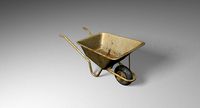
Weathered Wheelbarrow
... available on turbo squid, the world's leading provider of digital 3d models for visualization, films, television, and games.
turbosquid
$29

weather shelter
... available on turbo squid, the world's leading provider of digital 3d models for visualization, films, television, and games.
turbosquid
$25

Weather Vane
... available on turbo squid, the world's leading provider of digital 3d models for visualization, films, television, and games.
turbosquid
$10

Boxer Weather
... available on turbo squid, the world's leading provider of digital 3d models for visualization, films, television, and games.
turbosquid
$3

weather vane
... available on turbo squid, the world's leading provider of digital 3d models for visualization, films, television, and games.
turbosquid
$2
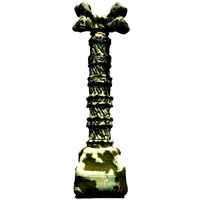
Weathered Pillar
... available on turbo squid, the world's leading provider of digital 3d models for visualization, films, television, and games.
Sensor
3d_export
free

parking sensor
...parking sensor
3dexport
car parking sensor
turbosquid
$1
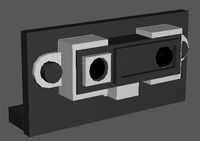
Sensor
... available on turbo squid, the world's leading provider of digital 3d models for visualization, films, television, and games.
3d_export
$5
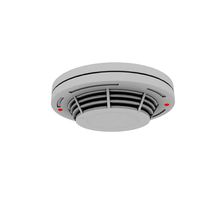
Smoke sensor
...port
smoke sensor, can be an impressive element for your projects. easy to use, realistic image, low polygon, quality materials.
3d_export
$5
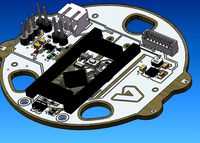
Air Quality Sensor v1
...air quality sensor v1
3dexport
air quality sensor v1
3d_export
$15

float sensor
...e up render. - all parts and materials are logically named. other formats ================= - collada (.dae) - autodesk fbx - obj
turbosquid
$26
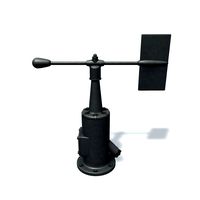
Wind sensor C
...free 3d model wind sensor c for download as 3ds, obj, and fbx on turbosquid: 3d models for games, architecture, videos. (1328943)
turbosquid
$26
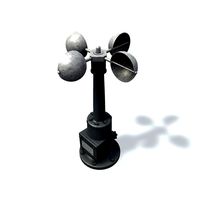
Wind sensor B
...free 3d model wind sensor b for download as 3ds, obj, and fbx on turbosquid: 3d models for games, architecture, videos. (1328168)
3d_export
$5
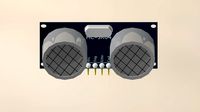
ultrasound sensor
...ivers convert ultrasound into electrical signals, and transceivers can both transmit and receive ultrasound. export in: -obj -fbx
3ddd
free

Вытяжка Shindo pallada sensor
... вытяжка
вытяжка shindo pallada sensor. в двух размерах - 600 и 900. текстуры в комплекте.
turbosquid
$52
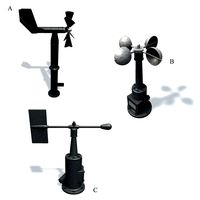
Wind sensor A B C
...
royalty free 3d model wind sensor a b c for download as fbx on turbosquid: 3d models for games, architecture, videos. (1408406)
Screen
archibase_planet
free

Screen
...screen radiator screen radiator enclosure lattice
screen radiator n120315 - 3d model (*.gsm+*.3ds) for interior 3d visualization.
archibase_planet
free

Screen
...screen
archibase planet
screen group display
movie screen - 3d model for interior 3d visualization.
3ddd
$1

Screen
...screen
3ddd
screen
modern dressing wall partition
3d_ocean
$15

HP Screen
...test hp screen. it is has different object, so you can use it as a wall mounted screen or a stand on table. hope you all like it.
3d_export
$10

Accessories screen LCD screen 3D Model
...d screen 3d model
3dexport
accessories screen lcd 3d model interior
accessories screen lcd screen 3d model sunupcg 17831 3dexport
turbosquid
$25

SCREEN
... available on turbo squid, the world's leading provider of digital 3d models for visualization, films, television, and games.
turbosquid
$2

Screen
... available on turbo squid, the world's leading provider of digital 3d models for visualization, films, television, and games.
3d_export
$10

Screen metal screen microwave 3D Model
...ave 3d model
3dexport
screen metal microwave oven 3d model interior
screen metal screen microwave 3d model sunupcg 17847 3dexport
3d_ocean
$5

Projector Screen
...hat have presentations. the projector screen consists of an alluminum structure that holds the canvas up. this model can be us...
archive3d
free

Screen 3D Model
...rchive3d
screen folding screen
screen n020811 - 3d model (*.3ds) for interior 3d visualization.
Air
3ddd
$1
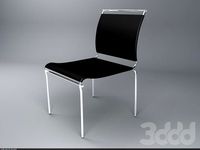
Calligaris air
...calligaris air
3ddd
air , calligaris
cтул calligaris air
3ddd
$1

Air freshener
...air freshener
3ddd
air freshener , освежитель
air freshener
design_connected
$16
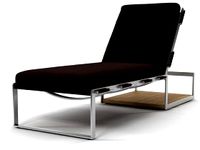
Air
...air
designconnected
flexform air lounge chairs computer generated 3d model. designed by antonio citterio.
turbosquid
$250
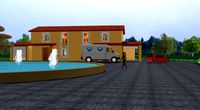
Heat pump air air
... available on turbo squid, the world's leading provider of digital 3d models for visualization, films, television, and games.
3d_export
$5
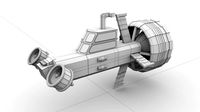
air
...air
3dexport
3ddd
$1
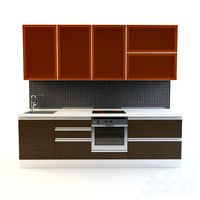
Кухня AIR
...кухня air
3ddd
air , мария
кухня air фабрики "мария"
3ddd
$1
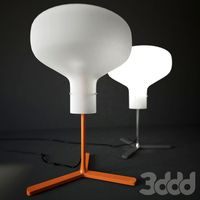
Лампа AIR
...лампа air
3ddd
boconcept , air
настольная лампа air, boconcept. в50½xø32см
3d_export
$40

air deflector
...air deflector
3dexport
air deflector
3d_export
$15

air purifier
...air purifier
3dexport
air purifier
3d_export
$5

macbook air
...macbook air
3dexport
macbook air
Housing
archibase_planet
free
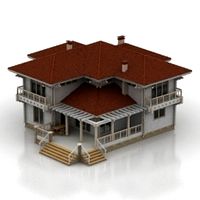
House
...t
house residential house private house wooden house
house wooden n290815 - 3d model (*.gsm+*.3ds) for exterior 3d visualization.
archibase_planet
free
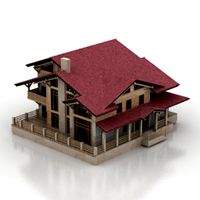
House
...use residential house private house wooden house
house wood stone n140815 - 3d model (*.gsm+*.3ds) for exterior 3d visualization.
archibase_planet
free

House
...ibase planet
house residential house building private house
house n050615 - 3d model (*.gsm+*.3ds) for exterior 3d visualization.
archibase_planet
free
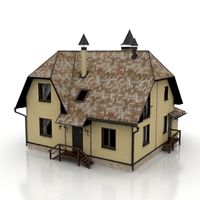
House
...ibase planet
house residential house building private house
house n030615 - 3d model (*.gsm+*.3ds) for exterior 3d visualization.
archibase_planet
free

House
...ibase planet
house residential house building private house
house n230715 - 3d model (*.gsm+*.3ds) for exterior 3d visualization.
archibase_planet
free

House
...ibase planet
house residential house building private house
house n240615 - 3d model (*.gsm+*.3ds) for exterior 3d visualization.
archibase_planet
free

House
...ibase planet
house residential house building private house
house n290815 - 3d model (*.gsm+*.3ds) for exterior 3d visualization.
archibase_planet
free

House
...ibase planet
house residential house building private house
house n110915 - 3d model (*.gsm+*.3ds) for exterior 3d visualization.
archibase_planet
free
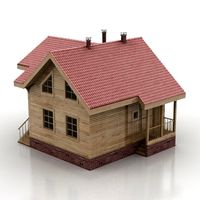
House
...ibase planet
house residential house building private house
house n120915 - 3d model (*.gsm+*.3ds) for exterior 3d visualization.
archibase_planet
free
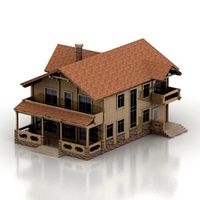
House
...ibase planet
house residential house building private house
house n210915 - 3d model (*.gsm+*.3ds) for exterior 3d visualization.
